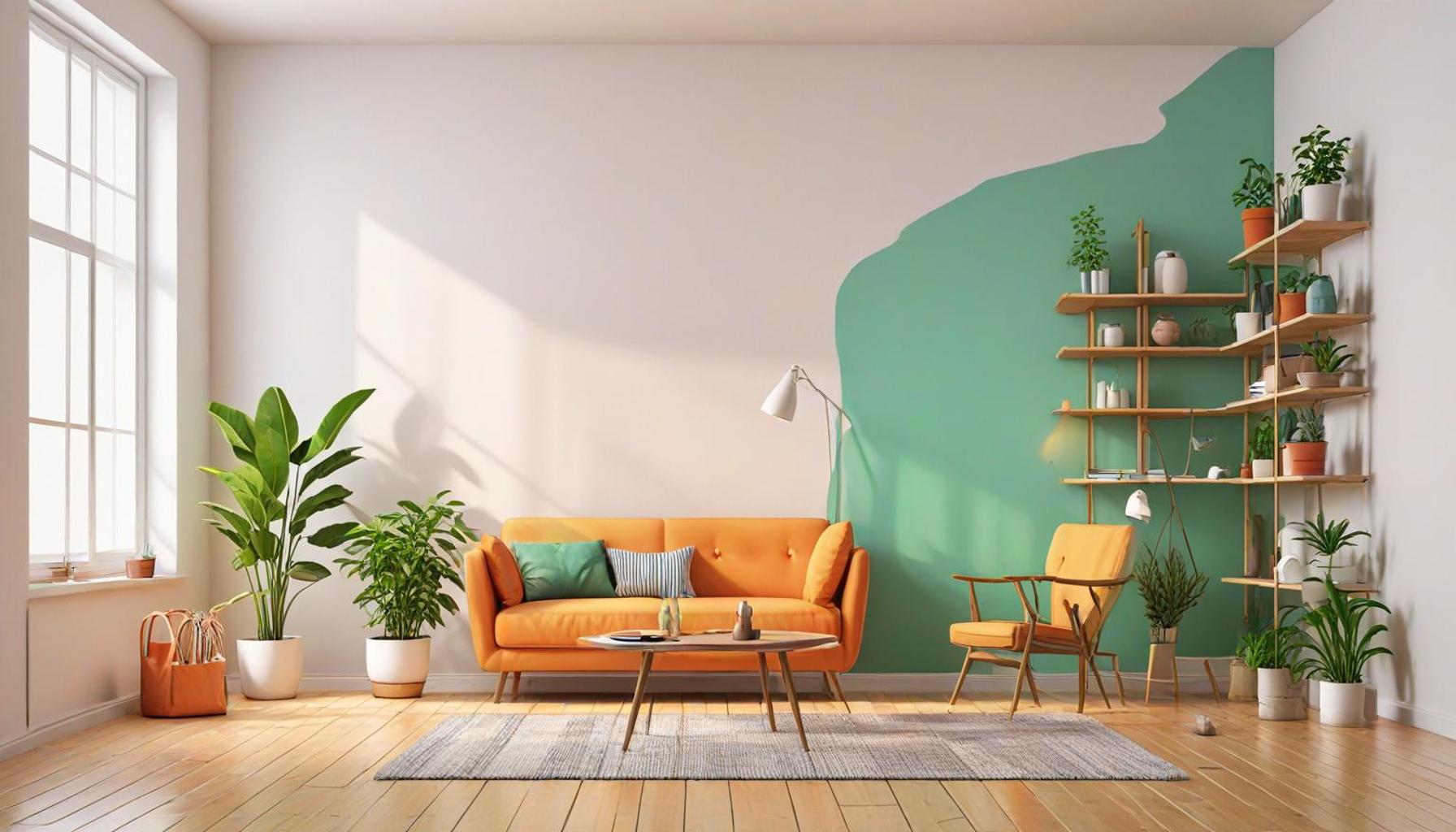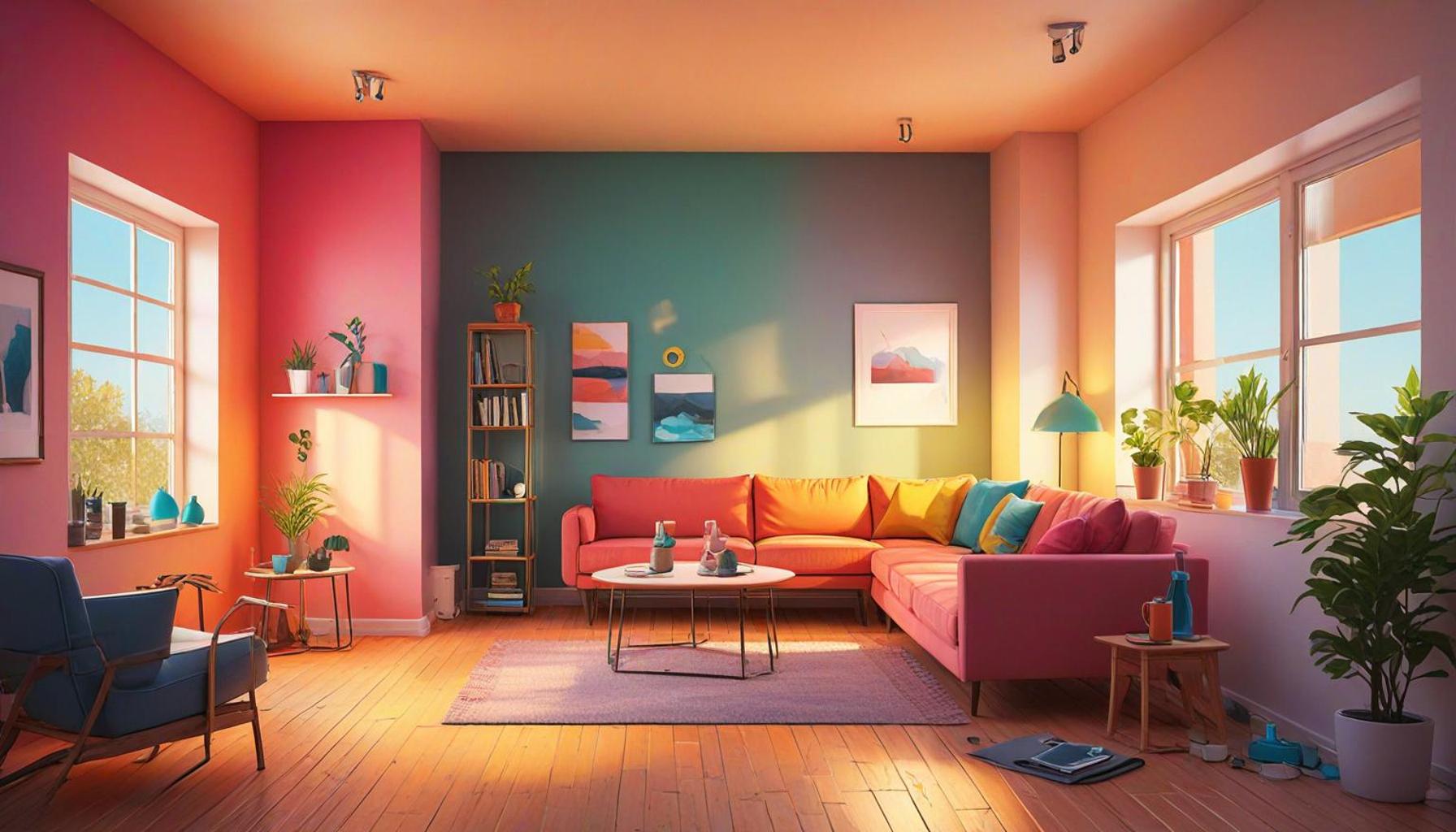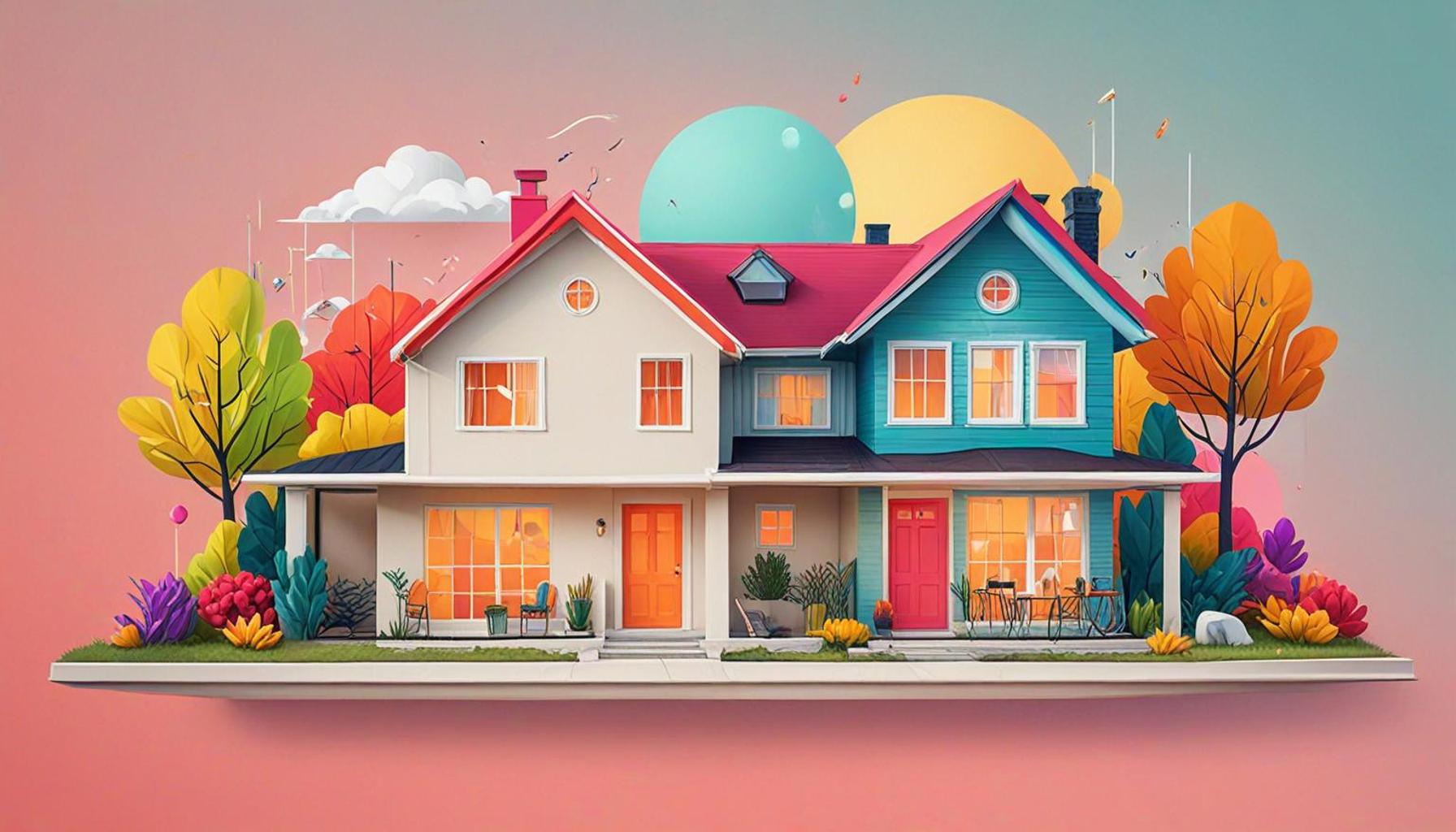The relationship between minimalism and sustainability in creating efficient spaces

Understanding Minimalism and Sustainability Together
In today’s context of heightened environmental awareness, the relationship between minimalism and sustainability is becoming increasingly significant. As more individuals and businesses recognize their impact on the planet, these two philosophies are merging to create a way of living that emphasizes conscious consumption and purposeful design.
At its core, minimalism focuses on stripping away the non-essential elements to highlight functionality and simplicity. It promotes a lifestyle that prioritizes quality over quantity, encouraging people to own fewer items that serve multiple purposes. This principle resonates with sustainability, which aims to protect the environment through practices that reduce waste and minimize ecological footprints. Together, these philosophies pave the way for creating efficient spaces that are not only visually appealing but also kinder to the planet.
The Role of Construction Practices
Incorporating sustainable practices in construction plays a vital role in this intersection. Utilizing sustainable materials, such as reclaimed wood, recycled steel, or bamboo, significantly reduces waste and lowers the environmental impact of new buildings. By avoiding resources that contribute to deforestation or pollution, architects and builders can foster a more sustainable environment. Notable examples include the Bullitt Center in Seattle, celebrated for its energy efficiency and use of eco-friendly materials, showcasing the potential of combining minimalism with sustainable construction techniques.
Space Optimization
Another crucial aspect is space optimization. Minimalist design principles advocate for maximizing available space, which not only leads to practicality but also diminishes the need for excessive resources, both in furnishing and construction. In urban settings, where space often comes at a premium, innovative design solutions—like multifunctional furniture or open floor plans—allow residents to enjoy a spacious feel without the clutter. The tiny house movement exemplifies this shift toward efficient living, with many people embracing smaller homes that inherently reduce their consumption and carbon footprints.
Energy Efficiency
Moreover, energy efficiency is a fundamental benefit of minimalist designs. Simpler layouts often incorporate fewer energy-consuming appliances and fixtures. Homes built with abundant natural light, for instance, can rely less on artificial lighting, thereby reducing energy use. Rooftop solar panels and energy-efficient windows are increasingly being integrated into minimalist homes, further contributing to sustainable living. This commitment to efficiency, reflected in the design of buildings like the Zero Energy House, ensures that sustainability is embedded into everyday living.
By merging minimalism and sustainability, individuals and organizations can create environments that reflect thoughtful consumption patterns. Rethinking our lifestyles in this way not only emphasizes the importance of quality over quantity, but it also leads to innovative solutions for modern living. As we explore these concepts deeper, we will uncover additional strategies that can help everyone—from homeowners to businesses—create spaces that are both aesthetically and environmentally responsible.
This evolving perspective is vital for addressing the pressing challenges of our time. Through minimalism and sustainability, we can positively impact the planet while embracing a lifestyle that values moderation and intentionality.
DON’T MISS: Click here to declutter your digital life
The Integral Connection Between Minimalism and Sustainable Design
The emergence of minimalism in recent years has sparked a broader conversation about design and living that goes beyond aesthetic appeal—it also intricately links to sustainability. The growing trend of minimalist living encapsulates efficiency in both form and function, leading to environments that are not just beautiful but also sustainable. By embracing fewer possessions and simpler designs, individuals not only improve their quality of life but also adopt practices that significantly lessen their environmental impact.
Conscious Consumerism
At the heart of minimalism lies the concept of conscious consumerism, which invites individuals to evaluate the necessity and impact of their purchases. This mindset aligns seamlessly with sustainability, as it encourages a lifestyle that prioritizes ethical and environmentally friendly choices. The less we buy, the less we contribute to resource depletion and waste generation. For example, opting for high-quality, durable items instead of fast fashion or disposable goods can make a substantial difference. Here are some key areas where conscious consumerism manifests:
- Quality Over Quantity: Choosing fewer, high-quality items that last longer helps reduce waste.
- Eco-friendly Choices: Supporting brands that prioritize sustainable materials and ethical labor practices.
- Second-hand Goods: Engaging with thrift stores and online marketplaces to extend the life of products.
Designing for Functionality
Another essential aspect of merging minimalism with sustainability is the approach to functionality in design. In minimalist spaces, every element serves a purpose, eliminating excess that can lead to clutter and waste. This principle extends beyond layout and furnishings—sustainable design incorporates intelligent systems that optimize energy and resources. For instance, homes with open layouts facilitate better airflow and natural lighting, reducing the need for artificial cooling and heating.
Furthermore, incorporating biophilic design principles, which connect inhabitants to nature, can enhance both mental well-being and energy efficiency. Green walls, natural ventilation, and the inclusion of plants can lower energy costs while improving air quality.
The Community Impact of Efficient Spaces
The shift towards minimalist and sustainable living is not just an individual choice; it creates ripple effects within our communities. By advocating for efficient spaces that inspire collective responsibility, communities can build environments that support sustainable lifestyles. Urban areas that prioritize green spaces, community gardens, and renewable energy initiatives reflect a holistic approach to living that embraces both minimalism and sustainability.
As neighborhoods evolve to encourage such practices, the societal benefits are profound—promoting stronger community ties and fostering shared resources can lead to reduced consumption and lower environmental footprints. Embracing minimalism while championing sustainability creates a narrative that not only redefines how we build and inhabit spaces but also reshapes our relationship with the environment.
This merging of philosophies offers a roadmap for redefining modern living—a lifestyle that treasures quality, embraces efficiency, and champions sustainability. Through these principles, we can start to imagine a future brimming with potential, where every space we inhabit is a step toward a more sustainable, responsible world.
| Advantages of Minimalism | Benefits for Sustainability |
|---|---|
| Promotes conscious consumption | Reduces waste through fewer material products |
| Enhances space efficiency | Lowers energy consumption in homes and offices |
| Encourages mindfulness and well-being | Promotes the use of sustainable materials |
| Enhances Aesthetic Appeal | Encourages eco-friendly designs and practices |
Minimalism and sustainability are closely intertwined in designing efficient spaces. By embracing minimalism, individuals are encouraged to adopt a simpler lifestyle, which inherently supports sustainability. Minimalism advocates for buying only what is necessary, thereby significantly reducing environmental impact. This movement not only cultivates a sense of tranquility but also invites a deeper connection to the surrounding environment.The act of decluttering spaces can lead to energy efficiency within homes and offices, as fewer items typically require less energy for heating, cooling, and maintenance. Additionally, minimalism promotes the use of sustainable materials such as reclaimed wood and recycled textiles, paving the way for eco-friendly design practices. By minimizing excess and prioritizing functionality and aesthetic appeal, these spaces become more harmonious and sustainable. This relationship lays the groundwork for a lifestyle that is both balanced and considerate of the planet’s health, pushing for a more eco-conscious future.
DISCOVER MORE: Click here to learn how mindfulness can enhance your personal organization
Innovative Solutions for Sustainable Minimalism
The synergy between minimalism and sustainability is increasingly evident through innovative solutions designed to create efficient spaces. As the demand for both aesthetic and ecological awareness increases, designers and architects are embracing strategies that embody simplicity while harnessing sustainable practices. This evolving paradigm emphasizes the integration of technology, materials, and designs that not only simplify life but also safeguard environmental well-being.
The Role of Sustainable Materials
Utilizing sustainable materials is paramount in achieving a minimalist aesthetic while minimizing environmental impact. Materials such as reclaimed wood, bamboo, and recycled metal are gaining popularity in design due to their lower ecological footprint compared to traditional building materials. For example, bamboo can grow up to three feet in a single day, making it one of the most renewable resources available. Additionally, incorporating recycled materials brings about a sense of history and craftsmanship to minimalist designs, illustrating that style can indeed align with sustainability.
Moreover, eco-friendly finishes and non-toxic paints play a significant role in ensuring that living environments are not just attractive, but also healthy. The use of volatile organic compound (VOC)-free products can drastically improve indoor air quality, promoting well-being while underscoring a commitment to sustainable living.
Smart Technology and Efficiency
Advancements in smart technology have further bridged the gap between minimalism and sustainability. Home automation systems that regulate lighting, heating, and water usage allow inhabitants to optimize energy consumption while maintaining a simple lifestyle. For instance, programmable thermostats can learn homeowners’ habits, automatically adjusting temperatures to maximize comfort and reduce energy waste.
Furthermore, appliances that boast energy efficiency ratings not only support sustainable practices but also align with minimalist principles by reducing clutter. The trend towards multifunctional devices, such as a washer-dryer combo, embodies the minimalist mantra of “less is more” while simultaneously conserving resources.
Adaptive Reuse in Urban Planning
In urban environments, the concept of adaptive reuse has emerged as a brilliant intersection of minimalism and sustainability. This practice involves repurposing existing structures to serve new functions, reducing the need for new materials and minimizing construction waste. Transforming warehouses into lofts or schools into community centers not only preserves architectural history but also revitalizes neighborhoods while promoting a minimalist lifestyle.
Cities across the United States are exemplifying this approach. For example, the High Line in New York City—a former elevated railroad—has been transformed into a thriving linear park, demonstrating how repurposed spaces can contribute to urban sustainability while embodying minimalist design principles. These projects remind us that sustainability is not only about reducing what we consume but also about creatively rethinking how we use what we already have.
The Psychological Benefits of Minimalism
Minimalism, when aligned with sustainability, also offers profound psychological benefits that can enhance quality of life. Research has shown that simplified environments promote mental clarity and reduce stress, allowing individuals to foster a deeper connection with their surroundings. Spaces that emphasize green design and minimal clutter encourage mindfulness and cultivate a sense of well-being. By creating environments that are both aesthetically pleasing and sustainable, designers can enhance inhabitants’ emotional health while promoting a lifestyle that respects the planet.
Through these innovative solutions, the relationship between minimalism and sustainability takes shape as a cohesive force that inspires not only personal transformation but significant societal change, paving the way for more efficient and responsible living spaces.
LEARN MORE: Click here to discover how to maximize utility
Conclusion: Embracing Minimalism for a Sustainable Future
The exploration of the relationship between minimalism and sustainability reveals a profound interconnectedness that goes beyond mere aesthetics. As we have seen, adopting minimalist principles can lead to cleaner, more efficient spaces that promote not only individual well-being but also collective ecological responsibility. By prioritizing the use of sustainable materials, integrating smart technologies, and embracing the concept of adaptive reuse, we can demonstrate our commitment to both simplicity and environmental stewardship.
Moreover, the psychological benefits associated with minimalist living—such as reduced stress and enhanced mindfulness—further enrich our daily experiences and foster a deeper appreciation for the resources we have. By creating environments that are free from excess, we not only enhance our quality of life but also contribute to a larger movement towards sustainability, illustrating that less truly can be more.
As we move forward, it is crucial to recognize that the path to a sustainable future lies in our ability to balance our needs with those of the planet. By continuing to explore and innovate within the paradigm of minimalism, we can cultivate spaces that reflect our core values and respect the Earth. Ultimately, the pursuit of efficiency and sustainability is not just a design philosophy—it is a necessary framework for living responsibly in an ever-evolving world. Embracing this relationship can inspire a cultural shift that emphasizes conscious consumption and the harmonious integration of nature into our everyday lives.


